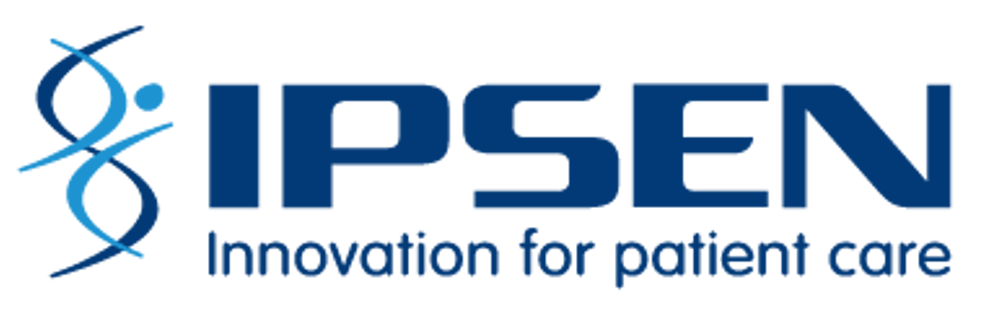
Person-centred care pathways: An unmet need in FOP
Commissioned by Ipsen and developed for Medthority. This content is intended for healthcare professionals only and has been reviewed by Ipsen for scientific accuracy.
DSFOP-UK-000030 – Date of preparation July 2022
Overview
While the hallmark characteristics of fibrodysplasia ossificans progressiva (FOP) are shared between patients (click to learn more about the clinical presentation of FOP), the patient pathway can involve a variety of specialists and fragmented routes, leading to misdiagnoses, lack of coordinated care, and ultimately decreased quality of life (QoL)1,2.
In person-centred care (PCC), healthcare professionals (HCPs) work collaboratively with patients and their families/caregivers to create a multidisciplinary and personalized healthcare plan to optimize patient care (Figure 1)3. In rare conditions like FOP, the implementation of PCC pathways (PCCP) is thought to improve access to appropriate care, ease the disease impact and alleviate difficulties associated with disjointed care4.
Communication, collaboration, and empowerment of patients and HCPs are at the foundation of PCC, to enable adapted care and increase confidence to manage patient needs3,4.
Implementation of a FOP PCCP requires continuous support, empathy, education and empowerment for patients and their caregivers.
Patient-centred care is an unmet need in FOP
There is an overwhelming need for PCCP in FOP. The current care pathways in FOP lack person-centricity and established standards of care, are time-consuming and require searching for specialized doctors5 (see Figure 2). This has led to patient misdiagnosis, delayed diagnosis, and harmful interventions, all of which contribute to decreased patient QoL (Click to learn more about QoL in FOP)1,2.
Support to make activities of daily living accessible for patients with FOP is needed, while minimizing the risk of heterotopic ossification, exacerbation from injury, viral infections, and limb overuse (Click here to learn more about FOP flare-ups)6. The complexity and rarity of FOP makes it challenging to manage. Therefore, patients and their families/caregivers may benefit from a multidisciplinary team (MDT) to support prevention management of soft tissue injury, physiotherapy, surgery, viral infection, and special dental care (to prevent flare-ups in the jaw)6.
The MDT could include (but not limited to) an endocrinologist, infectious disease specialist, pulmonologist, surgeon, anesthesiologist, rheumatologist, geneticist, otolaryngologist, dermatologist, internist, pediatrician, and rehabilitation specialist7. Including patients and their families/caregivers in the decision-making process may also improve trust, patient-provider interactions, and outcomes. In addition, this may increase HCP confidence (through education) in managing this complex disease, while improving healthcare system quality and efficiency3,4.
FOP MDT case study: Patient-centred dental care
An example of how the MDT can work together to improve care for patients with FOP is in dental care. Patients with FOP have limited options for dental anesthesia, as injections can lead to ossification of muscles in the mouth and rapid ankylosis of the jaw joint, posing life-threatening risks8. General anesthetic should instead be administered by an MDT, including an anesthesiologist to evaluate the patient pre-operatively, an otolaryngologist to assist with airway management, a dentist and oral maxillofacial surgeon to conduct dental procedures7. Other specialists may also be required, depending on individual patient needs.
A need for action
If you suspect that a patient has FOP, or a patient is diagnosed with FOP, think about connecting with different specialties to form an MDT. Empower the patient, listen to their needs and make them a partner in the decision-making process.
For additional information, please see:
- The International Clinical Council on FOP (ICC) guidelines
- The International Fibroplasia Ossificans Progressiva Association website
Abbreviations
FOP, fibrodysplasia ossificans progressiva; HO, heterotopic ossification; MDT, multidisciplinary team; PCC, patient-centred care; PCCP, patient-centred care pathway
References
- Sherman LA, Cheung K, De Cunto C, Kile S, Pignolo RJ, Kaplan FS. The diagnostic journey in fibrodysplasia ossificans progressiva: insights from the FOP registry. Presented at ASBMR 2020, 11–15 September 2020. Virtual Meeting. P-841.
- Kitterman JA, Kantanie S, Rocke DM, Kaplan FS. Iatrogenic harm caused by diagnostic errors in fibrodysplasia ossificans progressiva. Pediatrics. 2005;116(5):e654-661.
- The Health Foundation. ‘Person-centered care made simple: What everyone should know about person-centered care’. 2016.
- Walton H, Hudson E, Simpson A, et al. Defining Coordinated Care for People with Rare Conditions: A Scoping Review. Int J Integr Care. 2020;20(2):14.
- Reimann A, Bend J, Dembski B. [Patient-centred care in rare diseases. A patient organisations’ perspective]. Bundesgesundheitsblatt Gesundheitsforschung Gesundheitsschutz. 2007;50(12):1484-1493.
- Pignolo RJ, Bedford-Gay C, Liljesthröm M, et al. The Natural History of Flare-Ups in Fibrodysplasia Ossificans Progressiva (FOP): A Comprehensive Global Assessment. J Bone Miner Res. 2016;31(3):650-656.
- Kaplan FS, et al. The medical management of fibrodysplasia ossificans progressiva: current treatment considerations. Proc Intl Clin Council FOP. 2021;2:1-128.
- Luchetti W, Cohen RB, Hahn GV, et al. Severe restriction in jaw movement after routine injection of local anesthetic in patients who have fibrodysplasia ossificans progressiva. Oral Surg Oral Med Oral Pathol Oral Radiol Endod. 1996;81(1):21-25.
of interest
are looking at
saved
next event
- Patient-centred care is an unmet need in FOP
- FOP MDT case study: Patient-centred dental care
- A need for action
- Article 1: From soft-tissue to bone: Clinical presentation of fibrodysplasia ossificans progressiva (FOP)
- Article 2: The unpredictable nature of flare-ups in fibrodysplasia ossificans progressiva (FOP)
- Article 3: Impact of inappropriate care and disability accumulation on quality of life in FOP

